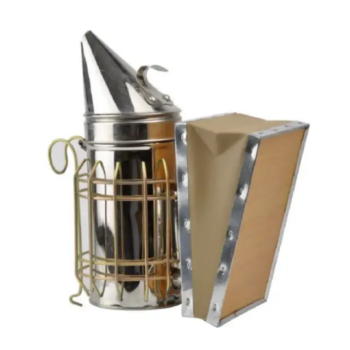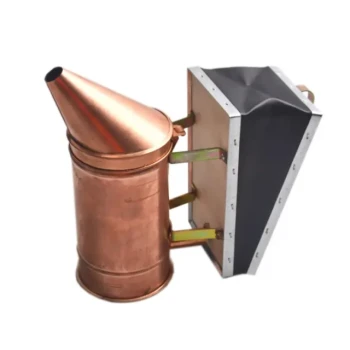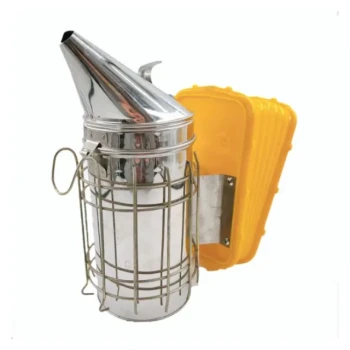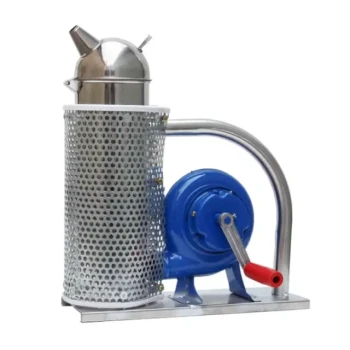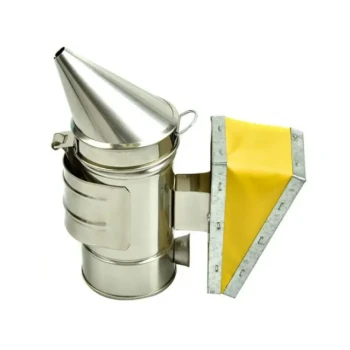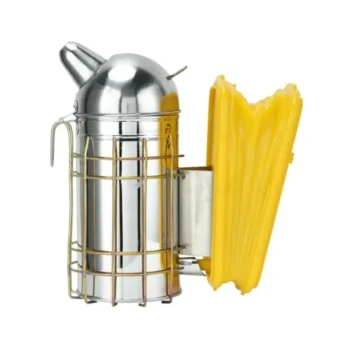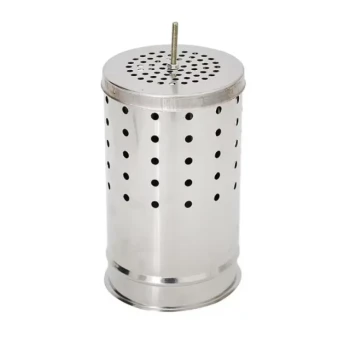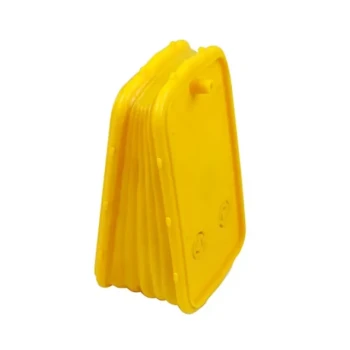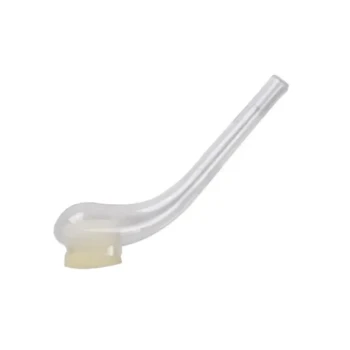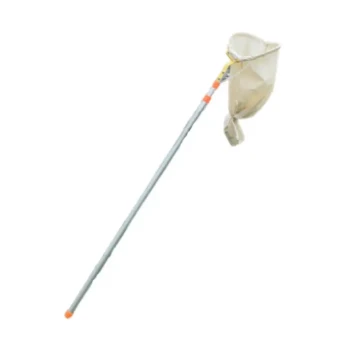To calm honeybees during an inspection, beekeepers use a smoker filled with a variety of natural, slow-burning fuels. Common choices include burlap, pine needles, wood pellets, untreated cardboard, or small twigs. The goal is to produce a cool, white smoke that masks alarm pheromones without harming or agitating the bees.
The specific fuel you use is less important than its properties. The ideal smoker fuel must be completely natural, untreated, and capable of producing a gentle, cool smoke that calms the colony rather than irritating it.
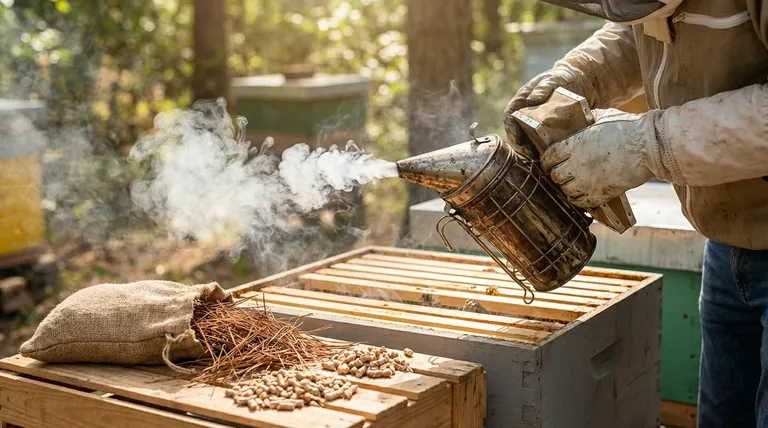
The Purpose of Smoking Bees
The practice of smoking bees is a cornerstone of modern beekeeping, designed to make hive inspections safer for both the beekeeper and the bees. Understanding the mechanism reveals why the choice of fuel is so critical.
How Smoke Calms a Colony
Smoke triggers two key responses in honeybees. First, it masks the alarm pheromones, such as isopentyl acetate, that guard bees release when they perceive a threat. Without these chemical signals, a colony-wide defensive response is less likely to occur.
Second, smoke initiates a feeding response. The bees' instinct interprets heavy smoke as a sign of a nearby forest fire, prompting them to gorge on honey in preparation to abandon the hive. A bee with a full stomach is physically less able to flex its abdomen to sting and is generally more docile.
Qualities of an Ideal Fuel
The best fuels share several characteristics. They must be easy to light, smolder slowly to last through an inspection, and most importantly, produce a cool, thick, white smoke. Hot smoke or flying embers will injure the bees and make them more aggressive, defeating the purpose entirely.
Common Fuel Sources for Your Smoker
Beekeepers have many options for smoker fuel, often relying on what is readily and cheaply available in their area.
Dried Natural Materials
Materials foraged from the local environment are a popular choice. This includes things like dry pine needles, which light easily and smell pleasant, as well as small twigs, dried leaves, or wood shavings. The key is ensuring they are completely dry and free of any mold.
Processed Natural Fibers
Many beekeepers use burlap sacks (made from jute) or scraps of 100% cotton fabric. Untreated and un-dyed cardboard also works well. These materials tend to smolder consistently and produce good smoke.
Commercial Smoker Fuels
For convenience, many beekeepers opt for commercially prepared fuels. These often come in the form of compressed wood pellets or cotton fibers. They are designed to be consistent, easy to light, and long-lasting.
Critical Mistakes to Avoid
Using the wrong fuel can be ineffective at best and harmful to your colony at worst. Avoiding common pitfalls is essential for bee health.
The Danger of Synthetic Materials
Never burn anything synthetic, such as plastics, nylon, or polyester. These materials can release toxic fumes that are harmful to the bees and can contaminate the honey and wax within the hive.
Why "Cool Smoke" Is Non-Negotiable
A smoker that is running too hot produces hot smoke and can shoot sparks or embers into the hive. This can burn the bees' delicate wings, injure the queen, and will be interpreted as a direct attack, making the colony far more defensive. Always allow the fuel to smolder properly before puffing smoke on the bees.
Avoiding Treated or Contaminated Materials
Be cautious with any processed materials. Do not use cardboard with excessive ink or glossy coatings, and never burn pressure-treated wood, painted wood, or paper that has been bleached. These treatments contain chemicals that can irritate the bees or introduce toxins into the hive environment.
Making the Right Choice for Your Goal
Selecting a fuel source often comes down to balancing convenience, cost, and availability. Your primary goal should always be the health and safety of your colony.
- If your primary focus is cost-effectiveness: Use foraged, dry natural materials like pine needles, wood shavings, or fallen leaves from your local area.
- If your primary focus is convenience: Purchase commercial smoker pellets or use clean, untreated burlap, as these provide a very consistent and reliable burn.
- If you are a beginner: Start with a widely recommended fuel like pine needles or commercial pellets to ensure you are producing a safe, cool smoke as you learn.
Ultimately, your success depends on producing a gentle smoke that keeps your bees calm and safe during inspections.
Summary Table:
| Ideal Fuel Property | Why It Matters |
|---|---|
| Natural & Untreated | Prevents toxic fumes from harming bees or contaminating honey/wax. |
| Slow-Burning | Provides a consistent smoke source for the duration of a hive inspection. |
| Produces Cool, White Smoke | Calms bees by masking alarm pheromones; hot smoke agitates them. |
| Easy to Light | Ensures the smoker is ready quickly and reliably when needed. |
Ensure Your Inspections are Safe and Efficient with HONESTBEE
A well-managed apiary starts with the right equipment and supplies. Just as using the correct smoker fuel is crucial for colony health, relying on high-quality, durable beekeeping gear is essential for your success and scalability.
HONESTBEE supplies commercial apiaries and beekeeping equipment distributors with the reliable tools they need to thrive. From smokers and protective gear to frames and extractors, our wholesale-focused operations provide the foundation for a productive beekeeping business.
Let's discuss your specific needs. Contact our team today to learn how our products can support the health of your colonies and the growth of your operation.
Visual Guide
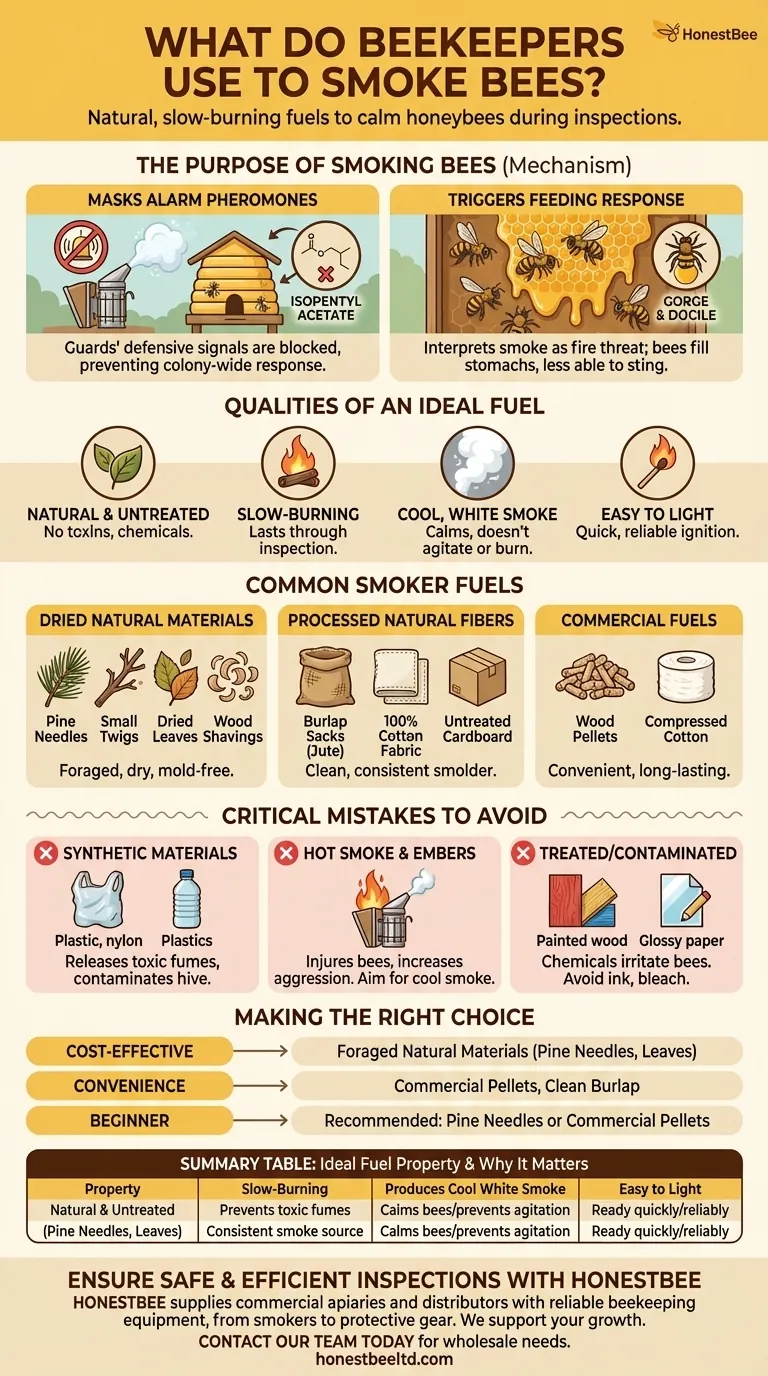
Related Products
- Stainless Steel Honey Bee Smoker Hive and Honeycomb Smoker for Beekeeping
- European Stainless Steel Bee Smoker for Honey Bee Hive
- Economy Galvanized Beekeeping Honey Bee Smoker for Wholesale
- Premium Traditional Copper Bee Smoker with Bellows
- Electric Bee Smoker European Style Bee Hive Smoker for Beekeeping
People Also Ask
- What is a bee smoker and what is its primary purpose? Master Safe Hive Inspections
- What is the smoke that beekeepers use? The Secret to Safe and Calm Hive Inspections
- What is a Smoker and how is it used in beekeeping? The Essential Tool for Calm, Safe Hive Inspections
- How did early beekeepers use bee smokers? Master Ancient Bee Calming Techniques
- What is the proper technique for lighting a bee smoker? Master the Layered Fire Method for Calm Hives
